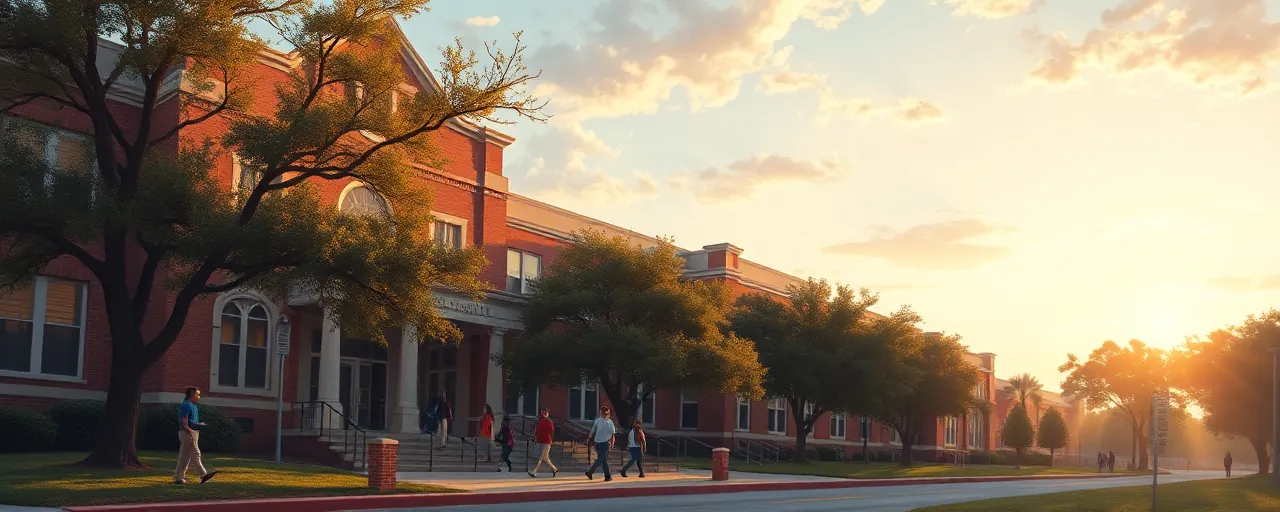A Landmark Investment in Texas Education
The Texas House of Representatives passed House Bill 2 in April 2025, a sweeping $8 billion initiative to strengthen public education. The bill, hailed as a historic step, increases per-student funding, raises teacher salaries, and expands resources for special education and early learning. Governor Greg Abbott praised the measure, noting its potential to elevate Texas schools to new heights for the next generation.
This infusion of funds arrives at a critical moment. Texas public schools have long grappled with financial pressures, from rising operational costs to teacher shortages. The bill aims to address these challenges head-on, offering a lifeline to districts while setting a foundation for long-term growth. Yet, as the state celebrates this milestone, questions linger about whether the funding goes far enough and how it fits into broader education debates.
For many Texans, the bill represents a tangible commitment to students and educators. Parents, teachers, and school leaders are watching closely, eager to see how the money translates into classrooms. But the conversation doesn’t end with funding. The passage of House Bill 2 has reignited discussions about school choice, equity, and the state’s role in shaping education’s future.
Breaking Down the Numbers
House Bill 2 boosts the basic per-student funding allotment from $6,160 to $6,555, with automatic increases tied to property value growth every two years. This adjustment, paired with $7.7 billion in new funding, marks the largest education investment in Texas history. The bill also allocates $1 billion for rural and mid-sized schools, $1.5 billion for special education, and $1.5 billion for pre-kindergarten and bilingual programs.
Teacher pay, a cornerstone of the legislation, sees significant gains. Teachers with three years of experience will receive a $2,500 raise, while those with five or more years get $5,500. In smaller districts with fewer than 5,000 students, raises are even higher, at $5,000 and $10,000, respectively. The Teacher Incentive Allotment program expands, offering top educators up to $36,000 in bonuses to reward excellence and retain talent.
Despite these strides, challenges persist. Nearly 63% of Texas school districts project budget deficits for 2025, driven by soaring property insurance costs and other expenses. While total per-student funding exceeds $15,000 when including local and federal sources, Texas ranks 38th nationally, and many districts say the new funds don’t fully bridge the gap.
A Mixed Picture of Progress
Texas public education shows pockets of excellence. The 2024 National Assessment of Educational Progress reveals that Texas 4th graders outperformed the national average in mathematics, with African American, Asian, and economically disadvantaged students posting notable gains. English Learners in Texas rank among the nation’s best in both 4th and 8th grade reading and math. The number of Gold Ribbon Schools, high-performing campuses serving low-income students, has grown by 50% in a year.
Yet, the data isn’t all rosy. Reading scores for 4th graders dipped slightly, and 8th graders saw declines in both reading and math, mirroring national trends. Only 17% of low-income schools meet the state’s high-quality threshold, and stricter accountability rules, requiring 88% of high school seniors to pursue college, careers, or military service for an A rating, have sparked debate. Some districts argue the pace of change outstrips their resources.
The University of Texas at San Antonio’s College of Education, now in the top quarter nationally, signals the state’s potential to produce skilled educators. But for every step forward, systemic hurdles like funding inequities and teacher retention remind stakeholders that excellence remains a work in progress.
The Voucher Debate Looms Large
House Bill 2’s passage unfolds against the backdrop of a heated debate over school choice. Governor Abbott has championed Education Savings Accounts, which would provide families with over $10,000 annually to attend private schools, with additional funds for students with disabilities and homeschoolers. Supporters argue this empowers parents and fosters competition, driving schools to improve.
Opponents, including many public school advocates, warn that vouchers could divert critical funds from already stretched districts. They point out that public schools, which educate the vast majority of Texas students, face ongoing deficits and can’t afford to lose resources. Rural communities, where private schools are scarce, express particular concern about the policy’s practicality and equity.
The Texas House has historically resisted voucher proposals, prioritizing public school funding. House Bill 2 reflects this focus, but the separate voucher bill under consideration suggests the issue won’t fade quietly. Lawmakers, educators, and families remain divided, each side grappling with what’s best for Texas students.
Voices From the Ground
Teachers, the heart of Texas education, feel both hope and frustration. The pay raises and expanded incentives are welcome, but many educators note that salaries still lag behind professions requiring comparable training. In rural districts, where raises are larger, teachers see the funds as a game-changer, yet urban educators often face higher living costs that blunt the impact.
Parents, too, are weighing in. Some applaud the increased funding and push for school choice, wanting more options for their children. Others, particularly in underserved communities, emphasize the need for equitable resources in public schools, from updated textbooks to better facilities. School board members, meanwhile, face the daunting task of balancing budgets while meeting stricter state standards.
Looking Ahead
House Bill 2 sets Texas on a bold path, channeling unprecedented resources into public education. The focus on teacher pay, special education, and early learning reflects a commitment to addressing long-standing needs. But the bill isn’t a cure-all. Districts still face financial strain, and the voucher debate underscores deep divisions over the state’s educational priorities.
As Texas navigates these changes, the stakes are high. Students, educators, and families are counting on leaders to translate dollars into outcomes, from higher graduation rates to better-prepared graduates. The road to educational excellence is long, but with careful stewardship, Texas has a chance to build a system that serves every child, no matter their background or zip code.
